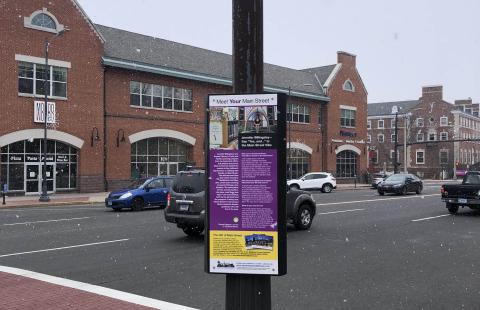What were the specific goals of this creative economy project? Describe the community development challenge or opportunity that your project was designed to address:
A short-term goal of the project is to help visitors explore beyond their standard downtown destinations. An additional goal is to celebrate and preserve our culture of openness, elevating awareness not just to our customers, but to those of us in the downtown business community. Hopefully, understanding ourselves and our unique place in our region will lead to protecting this quality as we encounter waves of gentrification or decline in the future.
Who was involved in this project and what did they do? (be sure to include the partners from outside of the creative sector and how local voices were included):
This project was led by one of the volunteer Downtown Business District commissioners, Jen Alexander, who is also the director of the Kidcity Children’s Museum, with assistance from Erin Dopfel, also at staff at Kidcity. DBD Chairs Diane Gervais (owner of Amato’s Toy & Hobby) and Marie Kalita Leary (property owner on Main Street) also contributed to the development of the project, as well as general support and involvement from the DBD Board, including 100% funding support for the project. Rani Arbo and John Elmore, both on staff at Wesleyan University at the Center for the Arts, provided critical support and feedback when considering the design and content of the project. Leadership at the Middlesex County Chamber of Commerce and the City of Middletown (including relevant city permitting departments) were involved over the development of the project. Ellen Maurer was the independent graphic designer and Bailey Wright was the freelance writer/photographer on the project; Young’s Printing in downtown manufactured and printed the signs, as well as participating in multiple prototype phases.
How does this project relate to a larger community development strategy?
This project is part of the DBD’s overall work to develop and support the downtown business community, which is done through various advertising, beautification, event and advocacy efforts.
What projects or places, if any, inspired your approach to this creative economy project?
Although we haven’t seen anything like our project in other communities, we’ve been intending to install a wayfinding signage system for many years. One of the challenges is that most downtowns are spread out and lend themselves to a different kind of map, but our downtown is long and narrow, so it made sense to use existing streetlight poles, rather than adding new and expensive sign fixtures to the sidewalks. This presented an opportunity for additional material to join the signs, and over time, the “Meet your Main Street” emerged as the best opportunity to showcase something unique about our downtown. As this project ages, future sets of signs might profile historic moments in town, or local high school students. We expect the signs to change about once a year.
